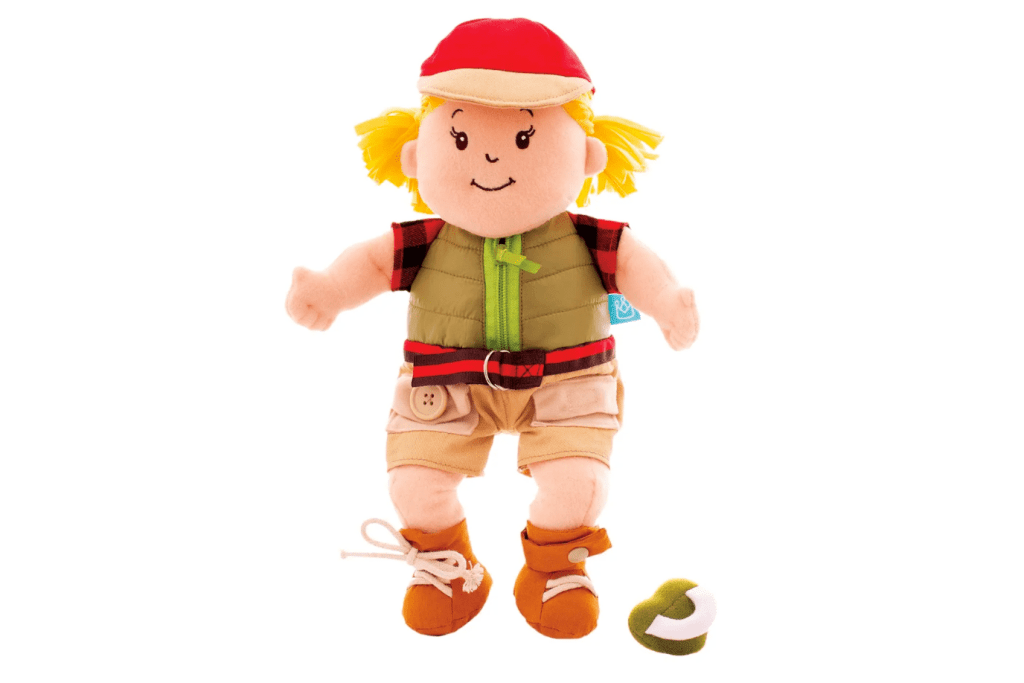Menu
-
-
Shop Gifts By Age
- Gifts For a 0-6 Month Old
- Gifts For A 6-12 Month Old
- Gifts For A One Year Old
- Gifts For A Two Year Old
- Gifts For A Three Year Old
- Gifts For A Four Year Old
- Gifts For A Five Year Old
- Gifts For A Six Year Old
- Gifts For A Seven Year Old
- Gifts For An Eight Year Old
- Gifts For A Nine Year Old
- Gifts For A Ten Year Old
-
Shop Gifts By Budget
- New Arrivals
-
Toys
- Large Active Toys
- Animal Toys
- Arts & Crafts
- Award-Winning Toys
- Bath Toys
- Birthday Wishlists
- Building Toys
- Cars, Trains, & Trucks
- Games
- Instruments
- Loose Parts Play
- Loot Bag Toys
- Made in Canada
- Outdoor Toys
- Pretend Play
- Puzzles
- Sensory And Fidget Toys
- Sensory Bin Tools & Fillers
- STEM Toys & Activities
- Toronto-Themed Gifts
- Travel Toys
- Wooden Toys
- Waiting Room Toys & Furniture
-
Montessori Materials
- Montessori At-Home Program
-
Montessori Furniture
-
Bundles & Sales
-
Books
-
Shop By Age
-
Shop By Brand
- Brands A-F
- Brands G-L
-
Brands M-R
- MagicPlaybook
- Magna Tiles
- Make Believe Ideas
- Makedo
- Manhattan Toys
- Math for Love
- Milaniwood
- MindWare
- Mojo Toys
- Moluk
- Moulin Roty
- Native Northwest
- nic
- Nienhuis
- Ooly
- Opinel
- Ostheimer
- Papoose
- Peaceable Kingdom
- Plan Toys
- Plus-Plus
- Preschool Collection Watches and Timers
- Ravensburger Puzzles
- Real Life Pages
- Brands S-Z
-
- 866-901-4696
- Gift Registry
- Login


The Montessori “Dress Code”
2 min read
Ok there's no official Montessori dress code BUT Montessori teachers do have recommendations for parents.
These 5 suggestions are purely for the purpose of enhancing your children's comfort and development.
And they're simple enough to put into practice at any age:
1. Movement is Key

Clothes should be easy to move in - sweatpants, t-shirts, sweatshirts, etc. are best for day to day. Save the cute skinny jeans and dress clothes for special occasions.
For infants starting to crawl, cruise or walk, bare feet are ideal whenever possible to give them more traction.
2. Function Over Fashion
Ideally your child's clothes don't have any closures that they can't manage independently.
For example, it's best to choose elastic waist pants, rather than ones with buttons, zippers, or clasps.
All closures should also be in the front of the clothing so children can access them.
In a Montessori classroom, children learn how to manage the different clasps and closures via the Dressing Frames but items like the Activity Buckles Board, Busy Book or Baby Stella Learn to Dress are great for the home environment.


You can also practice the different closures on your child's clothing at a low stress time, not when you're rushing out the door in the morning.
3. Size is Important
This may be controversial but it can be frustrating for children and teacher's when clothes are much too big.
Clothes or shoes that are purchased with the intention that the child will "grow into" them is nice in theory but when they're too big, they can get in the way of work, play, and movement.
4. Holes are Normal
Holes in clothing and shoes are normal and should be expected because of how active children are. Teachers aren't judging you for that and it's only a problem if the holes are causing a functional issue, i.e. rain boots that allow water in.
5. Layers Are Great
It's usually a good idea to dress your child in layers. They get hot easily because of how active they are and it can be difficult to self-regulate when you’re feeling too hot.
Being too hot or cold is a stressor in the Biological Domain, described in Dr. Stuart Shanker's book, Self-Reg.
And the tricky thing is that young children can't often make this association - "I'm hot so I feel bad/frustrated". Instead they cry or have a meltdown for seemingly no obvious reason.
Join Our Montessori Community
Sign up to get weekly activities, free printables, Montessori parenting guidance, and so much more.
Plus, get $10 off your first order of $100+.
Like this article? Get new articles, weekly activities, free printables, Montessori parenting guidance, and so much more.
One mom recently shared:
"Your newsletter is always SO great. It is one of the few I open and read weekly. You provide so much value. Thank you!"

![[FREE PRINTABLE] New Winter Play Dough Mats](http://themontessoriroom.com/cdn/shop/articles/Katie_-_Blog_Post_Header_Images_1277_x_957_px_6_1600x.png?v=1765901378)
